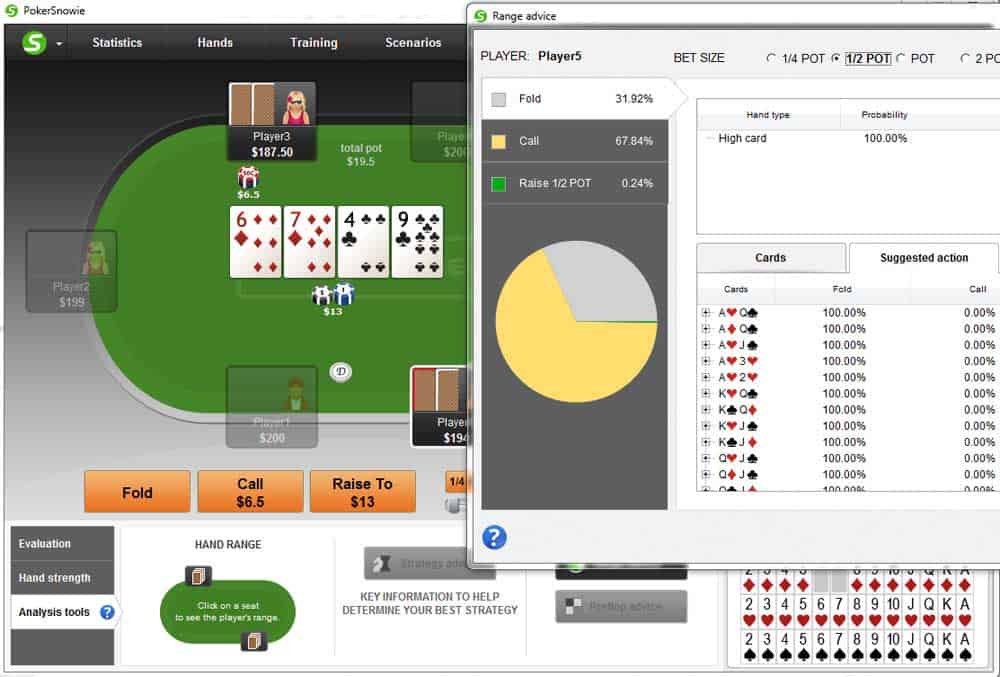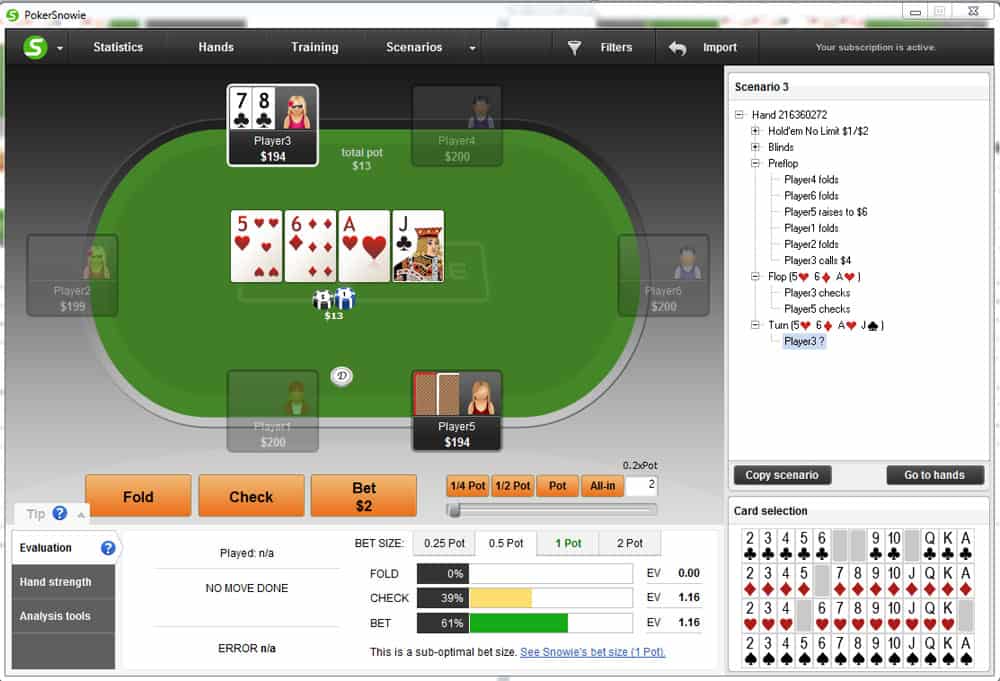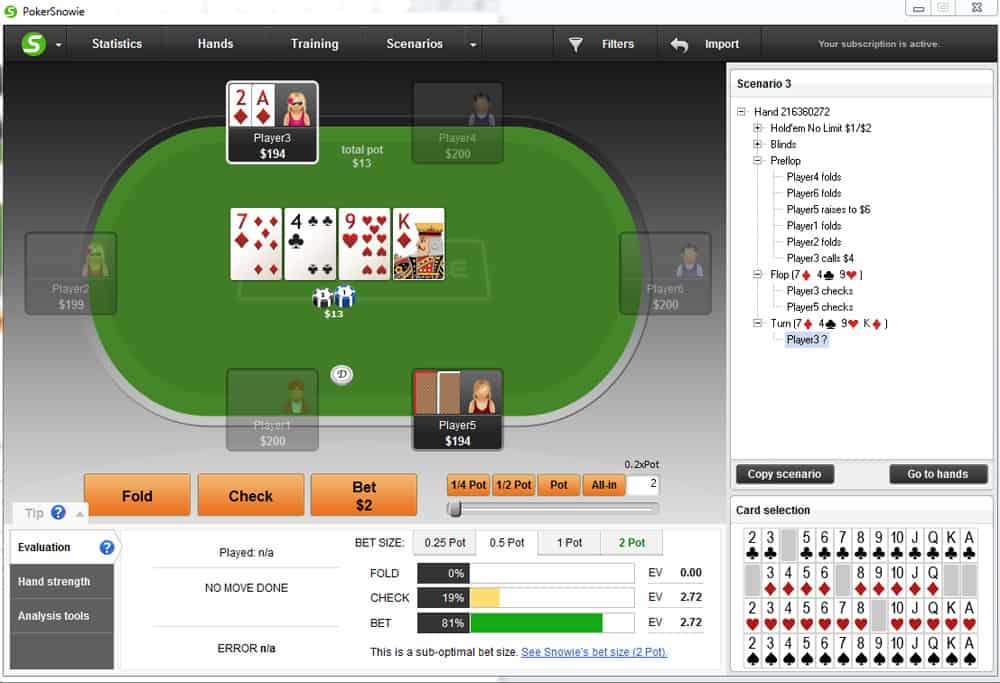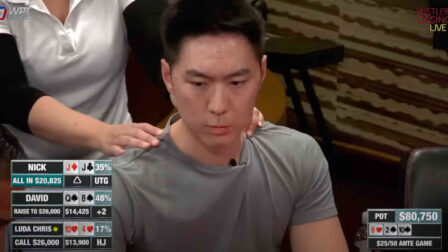PROBE BETS: Taking Initiative Vs Missed C-bet

9 minutes
Last Updated: March 19, 2024
Before we start any strategic discussion about poker hands and probe bets, we should first identify the term.
Probe bets are the bets made out of the position on either the turn or the river after the initial raiser decides to skip on the continuation bet on the flop.
There are a few things we want to achieve by using probe bets:
- Try to win the pot right then and there
- Take the initiative in the hand
- Build a profitable bluffing spot on the river
When used correctly, this move can be extremely valuable and help you print money in these spots. However, you shouldn’t always fire out of the position if the original raiser misses c-bet on the flop. If you do it too much, you’ll open yourself to a world of trouble against good players who’ll often trap you on the flop, knowing they can extract more value by checking back than by c-betting.
Instead, you need to have a balanced approach against tough opponents, but you can bet most of your hands against weaker competition. The number one thing to look at is the board texture and how it corresponds with yours and the raiser’s perceived range. The second important factor is your opponent’s c-bet stats. Finally, there is your hand strength in relation to the board.
Table of content
The Board Texture
In general terms, there are certain flop textures that favor a raiser and certain textures that correspond more with the player defending from the blinds, based on their preflop ranges. When playing online, you can rely on Poker Tracker or Hold’em Manager to put your opponent’s on approximate opening ranges from various positions, but if you are playing live, you just have to observe your table and base decisions on population tendencies in your games.
In the vacuum, though, certain boards will present great opportunities to fire a turn probe bet. It helps if you also have a hand that somehow fits the texture, but even if you have just air, you’ll often win the pot in these scenarios, simply because you have a big range advantage over your opponent. Let’s look at an example:

Get PokerSnowie FREE Trial and try it yourself!
In this scenario, the flop was checked through, and we’re playing within the GTO ranges proposed by Poker Snowie here. As you can see, when we fire a probe bet on the turn here, the software suggests the original raiser should fold almost 32% of the time to a half-pot bet.
However, in reality, players will be folding more often, making this move highly profitable for you. Even if they call on the turn, you will be able to make them fold most of their hands on the river, because people rarely check strong hands on this kind of board textures on the flop.
Now, let’s look at the same scenario but with a different turn card.

Although it may seem counterintuitive, a big card such as a King or Queen on the turn is still an excelent card to fire a probe bet on after a missed flop continuation bet.
While these big cards are certainly in our opponent’s perceived range when they open from the cutoff, they’ll still need to fold about 58% of the time here. So, the only way they can continue at this point is if the turn card actually helps them improve or they check a reasonably strong hand on the flop.
Remember, we’re looking at our hand in a vacuum here, so we’re accounting for the entire range. In certain scenarios, where we have decent equity even against made hands, this probe bet will be very profitable between the times we win the pot outright and those times we get called on the turn but make him fold on the river or improve on the river and end up winning an even bigger pot
Planning for the River vs Missed C-bet
Once the opponent gives up the lead on the flop and given the favorable board texture, we can fire a probe bet on the turn with the mind of firing two barrels if we catch a favorable card on the river. Let’s continue with the same example but assigning a couple of actual hands to see how this strategy can work out.

Get PokerSnowie FREE Trial and try it yourself!
So, we fired the turn and now face a decision on the river. This is obviously a scare card for your opponent because you have way more made hands than him. You are more likely to have a combo that contains a 5 in our hand, plus there are various two pair combinations as well.
So we should maximize our EV and force our opponent to fold most of his holdings. As you see, he will be forced to fold even medium strength hands, so why not take advantage of that?
Of course, in this spot, you have to be ready to fire a big bet that puts the raiser to the test. If you bet less than half the pot, they will be more likely to call. Thus, you need to polarize and bet on the bigger side. As long as you also occasionally do it on the rivers that do complete your draw, you’ll be well balanced and will make it hard for your opponents to put you on the hand.
Probe Betting Based on Your Hand
In the previous section, we’ve mostly looked into situations where your perceived range is simply such that it corresponds better with the board than the one of your opponent. However, there are also certain situations where you can fire a probe bet on the merit of your hand, even if it is possible that the opponent has connected with the board to some extent.

In this spot, Poker Snowie suggests probe betting 61% of the time and prefers the aggressive line, even on Ace high board, which tends to favor preflop aggressor. This gives us an opportunity to win the pot on the spot, and if we do get called, we can still improve or bluff our way to the pot on heart rivers, for example.
Given the fact our opponent has checked through on the flop, it is unlikely they have a very strong hand. Of course, every now and then they will have an absolute monster, some bluff catchers or decide to check back with a draw themselves, but in a lot of scenarios, their hand will have problems calling the turn probe bet and will have to give up on many rivers.

In this type of spots, Snowie likes betting out even more because we’ve picked up backdoor equity and our hand is somewhat disguised. Additionally, our Ace outs might be good as well, so there is plenty of reason to take the initiative here and start betting out. In the event we do get called, we can try different strategies and bet sizes based on the river card in case we don’t improve.
Taking Advantage of Your Opponent’s Tendencies
With online games, we often have the advantage of being able to see poker stats of our opponents, which tell us a lot about their tendencies. Some players do take an approach where they only fire a c-bet when they connect with the flop in some way, shape, or form and tend to check through in all other scenarios.
Against these players, you can really expand your probe betting range and fire on almost all turns unless they are cards that are likely to help them. Although we’ve seen from some examples that high cards aren’t necessarily bad ones when considering a turn probe bet.
However, you should rarely fire a probe bet on an Ace-high boards, because most players tend to check a lot of Ace-x combos on the flop.
This is simply because there will be so many other turns that you’ll be able just to bet and take it with no resistance. Since they’re playing such a fit-or-fold style, there is no need to get involved in spots where they are likely to continue (i.e. the turn card might have helped them). Plus, if they check back on the turn as well, you can then go ahead and fire on the river, expecting to win the pot with a high enough frequency to merit this line.
Likewise, if you’re facing a player with a fairly high c-bet percentage and also a tendency to raise turn probes, you need to be careful. These are tricky opponents who’ll often have a balanced range when they check back, meaning that they’ll have some big hands in their range as well and the last thing they’re planning to do when they check the flop is to fold on the turn.
If you have a big enough sample of data, these are the things to look out for when deciding whether to fire out a turn probe and try to take control of the betting. Either way, you can make your life much easier by having a solid range of starting hands!
Probe bets and bet sizing
Choosing the right bet sizing for probe bets can help you make a ton of money, or put you in many tough spots if you fail to do that.
There are a lot of things you need to take into consideration, like ranges, board texture advantage, opponent tendencies, and so on, but I will try to summarize it in a very simple way:
- BET BIG – when turn brings and overcard that does not connect well to the flop, you should fire a big bet to fold out medium strength bluff catchers and low equity hands. If you have a flop of 985 and turn is Q, your goal is to make hands like second/third pair, Ace-Highs, and other overcards fold. You are not targetting Qx, so if your opponent calls your huge bet on the turn, you should be giving up if unimproved in most cases.
- BET SMALLER – when the turn connects to the flop, you should use smaller sizings and plan for betting both turn and river. In these spots, you will have a significant range advantage, and even though your opponent will be able to call some of your turn bets, most players will be over folding on the river, so take advantage of that.
Conclusion: When in Doubt – Fire Out
More often than not, aggression wins in poker. Probe bets present a nice way of taking over the betting lead and seizing control in the hand. While there are some tough players out there who might put you in difficult spots, you’ll often be able to win some pots that don’t belong to you by picking up on the flop weakness and proceeding to bet the turn yourself.
Of course, you never want to be a “one-trick pony” when at the tables. This means that you still need to have a well-balanced strategy that includes some check-raise turn lines with very strong hands as well as some speculative holdings to keep your opponents on their toes. Having probe bets in your arsenal as well will help make your game even less predictable, which is bound to result in higher win-rates.
Summary:
- As a standard, fire aggressively against missed c-bets
- Bet more often on the turn and river cards that connect to your range
- Bet when the turn connects to the board because this gives you advantage most of the time
- Bet your draws on almost all runouts
- Use big sizing when you want to fold out his bluff-catchers
- Use smaller sizing when you do have a range advantage




















